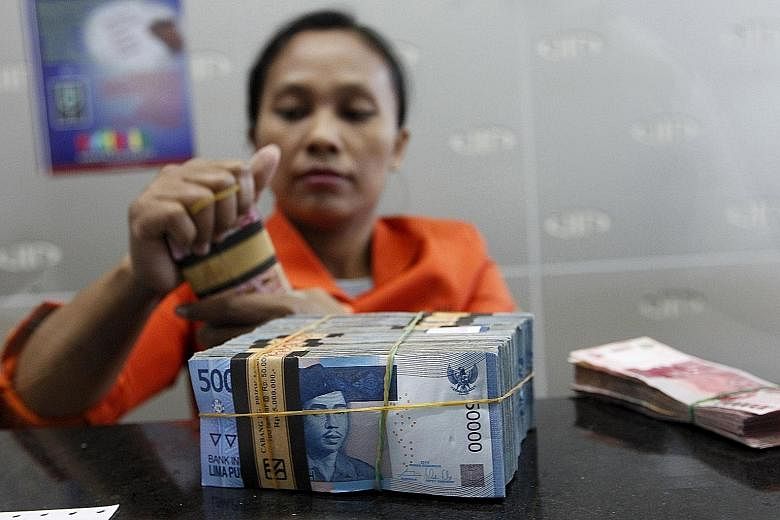Most emerging Asian currencies rose yesterday ahead of US jobs data released last night, leaving them set to post another week of gains on speculation that the Federal Reserve will raise interest rates more slowly than expected.
Investors unwound bearish bets on regional units as the US dollar wallowed at a 15-week low against a basket of six major currencies. It lost ground following data showing the number of Americans filing for jobless benefits rose more than expected last week.
Non-farm payrolls (NFP) increased by 151,000 last month and the unemployment rate was at 4.9 per cent, the lowest since February 2008, the Labour Department said yesterday.
"NFP has to surprise on the upside significantly to put a floor under the USD/Asia. The likelihood of a March hike has fallen quickly to just one-in-10," said Mr Andy Ji, Asian currency strategist for Commonwealth Bank of Australia in Singapore. He added that Asian currencies may weaken again only if the US job growth number is 220,000 or higher.
The moderation in hiring still leaves the job market on a solid footing and shows companies are confident about the outlook for domestic sales. Analysts cautioned that the jobs data shows it is too early to take a March interest rate hike by the US central bank completely off the table.
But Fed funds futures contracts on Thursday suggested that traders were pricing in just a 10 per cent probability of a hike next month and a 41 per cent chance by the end of the year, according to CME FedWatch.
That came after weak US economic data and dovish comments from New York Fed president William Dudley on Wednesday.
Growing expectations of a slower Fed rate hike spurred investors to dump US dollar holdings against emerging Asian currencies this week, although traders took profits from regional units ahead of the Chinese New Year holidays next week.
Many financial markets in Asia will be closed early next week, with China shut for the whole of the week. The Singapore dollar benefited the most, leading weekly gains among regional units. The Singdollar rose 1.7 per cent against the greenback this week, its largest weekly gain since early October.
"We undertook a tactical short USD-SGD on the premise that the broad dollar may stumble further if investor scepticism towards the Fed heightens multi session," said Mr Emmanuel Ng of OCBC Bank, in a client note.
Indonesia's rupiah advanced 1.3 per cent this week as investors sought one of the highest yields in the region.
The Thai baht has also gained 0.6 per cent throughout this week on bond inflows, and Malaysia's ringgit climbed 0.4 per cent for the week.
REUTERS

